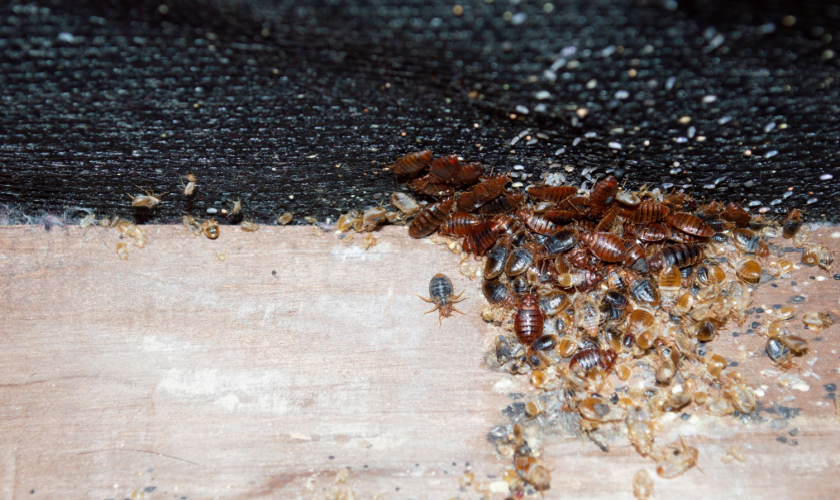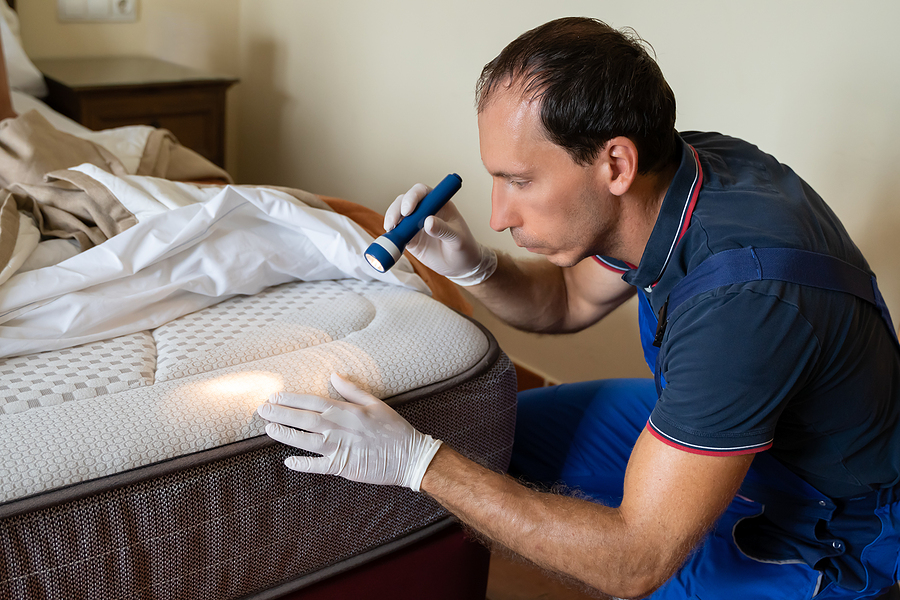A1 Bed Bug Exterminator Houston: Quick Removal Solutions
A1 Bed Bug Exterminator Houston: Quick Removal Solutions
Blog Article
Recognizing the Lifecycle of Insects for Targeted Control Approaches
Comprehending the lifecycle of bugs is an essential element of effective insect monitoring techniques. With a deeper understanding of exactly how pests thrive and advance, tailored control strategies can be made to address specific factors in their lifecycle, eventually leading to even more effective parasite management outcomes.
Importance of Understanding Bug Lifecycle
Understanding the lifecycle of insects is crucial for creating efficient and targeted control strategies in pest management. By comprehending the numerous phases a parasite goes with from egg to adult, parasite control specialists can identify vulnerable points in the lifecycle where treatment can be most successful.
Furthermore, recognizing the particular ecological problems necessary for each and every stage of the bug's lifecycle can assist decisions on environment modification or exclusion approaches to reduce and interfere with the lifecycle insect populaces. This understanding makes it possible for pest management professionals to carry out proactive procedures as opposed to depending exclusively on responsive therapies, bring about more long-lasting and lasting bug control solutions. Ultimately, an extensive understanding of insect lifecycles encourages bug control experts to tailor their approaches effectively, maximizing and minimizing ecological impacts control results.
Key Phases in Insect Development
To effectively apply targeted control strategies in insect monitoring, an essential aspect lies in comprehensively determining and understanding the vital phases in insect advancement. Insect growth typically consists of numerous vital phases that are vital for their lifecycle and management.

Vulnerabilities in Insect Lifecycle
Throughout the different stages of a parasite's lifecycle, distinctive susceptabilities arise that can be strategically targeted for efficient control measures. One crucial vulnerability lies in the egg stage, where pests are typically a lot more susceptible to certain pesticides or biological control representatives because of their soft outer shell, making them less complicated targets for intervention. Furthermore, the nymph or larval phase offers vulnerabilities as insects go through fast development and advancement, requiring high power usage that can be made use of by interrupting their food sources or presenting development inhibitors. Pupal stages, defined by stability and improvement, offer a window for targeted control through physical obstacles or particular therapies that prevent successful emergence. Adult insects, while extra resistant due to their reproductive ability, can still be susceptible during breeding or egg-laying activities, which can be disrupted via scent catches or sterilization strategies. Recognizing these vulnerabilities in the insect lifecycle is important for developing efficient and accurate control strategies that effectively take care of bug populations while reducing ecological impact.
Carrying Out Targeted Control Actions

Executing targeted control actions usually involves a multi-faceted strategy. This may consist of environment alteration to make the setting much less congenial to insects, such as eliminating standing water for mosquito control or securing access factors for rodents. In addition, organic control methods can be utilized, where all-natural killers or virus are presented to keep pest populaces in check.
Integrated Parasite Management (IPM) approaches that integrate different control measures in a worked with and lasting manner are usually the most effective in attaining lasting bug management objectives. By carrying out targeted control procedures based on a complete understanding of parasite lifecycles, parasite populaces can be properly managed while reducing dangers to human health and the environment.
Enhanced Pest Management Practices

Additionally, the consolidation of biological control representatives, such as natural predators or pathogens of insects, can assist lower reliance on chemical pesticides and promote an extra well balanced ecological community. Executing physical obstacles and catches can likewise be component of A1 Bed bug exterminator houston LLC improved bug administration techniques, supplying non-toxic and targeted solutions for parasite control. Furthermore, making use of pheromones and other semiochemicals can interfere with pest breeding patterns and interaction, leading to minimized parasite populaces in time.
Conclusion
In final thought, understanding the lifecycle of bugs is important for reliable bug administration methods. By identifying key phases in insect growth and susceptabilities in their lifecycle, targeted control procedures can be carried out to lessen pest populaces. Improved bug administration practices can aid decrease the dependence on broad-spectrum chemicals and promote even more eco friendly and lasting insect control approaches. This understanding plays a crucial function in preserving healthy and balanced communities and agricultural efficiency.
Understanding the lifecycle of insects is important for developing effective and targeted control techniques in pest monitoring. By comprehending the different phases a pest goes through from egg to adult, insect control experts can recognize vulnerable points in the lifecycle where treatment can be most effective. Ultimately, a complete understanding of pest lifecycles equips parasite control practitioners to tailor their approaches efficiently, decreasing ecological effects and making best use of control results.
By carrying out targeted control steps based on a detailed understanding of insect lifecycles, insect populations can be efficiently managed while lessening dangers to human wellness and the setting.
By recognizing vital stages in bug advancement and vulnerabilities in their lifecycle, targeted control actions can be implemented to minimize bug populaces.
Report this page